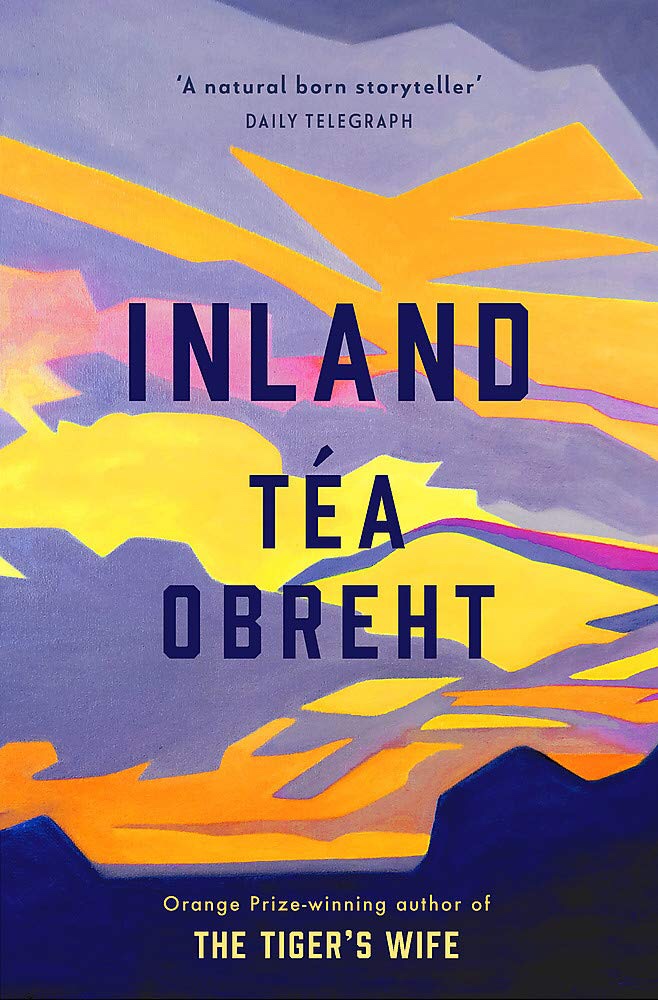Téa Obreht’s Inland is extraordinary in its prosaic intensity, one of the many reasons it has been shortlisted for this year’s International Dylan Thomas Prize. The story depicts the lives of Nora on a farm during a drought in the Arizona territory in 1893, and the frontiersman Lurie as he arrives in Texas from eastern Europe.
It’s also a ghost story, and therefore has been compared to Toni Morrison’s Beloved. Likewise, because of the dominant desert landscape it’s been compared to Gabriel García Márquez’s One Hundred Years of Solitude. As with the latter in particular, the demanding and destructive nature of the landscape is to the fore in Inland. Perhaps even more than Márquez’s novel, Inland encourages an ecocritical lament about the damage we as humans are doing to the planet’s ecology.
In the rest of this post, I want to focus on the valuable ecological aspect of Obreht’s novel and, more closely, the important use of animals as empathetic and friendly consolations. This is especially true in the way that Lurie travels across the western deserts astride his steed.
And crucially, his steed as a singular ability to withstand the hardships of a drought-ridden desert, because his steed is a camel.
The camel is not the only animal in the text, of course. Nora first falls in love with Emmet when he shows her a large tooth from a ‘river horse’, and she thinks he is mocking her. A little later she understands the magnificence and size of the hippopotamus: ‘Other people had spring wagon rides and long afternoon walks’, we read. ‘Nora and Emmet had the tooth.’ (p. 64)
There are two appearances of a circus in the text. In the first flush of their courtship, Nora and Emmett see ‘a travelling circus [that] brought a zebra through Morton Hole. Emmett and Nora stood on the bridge and watched it move […] into history’ (p. 64). Whilst Nora is surprised by the way that the zebra doesn’t look like it does in the pictures of it, there is still a subtle sense of companionship born of the encounter. On this occasion it’s between the lovers, but it’s played out more fully between Lurie and his camel, Burke.
Lurie and Burke are part of the circus for a short while, with Lurie admitting that
we might have done better than that raggedyman circus we wound up following through Nevada’s camping night after night beneath the stars. We met good people there, but their friendship was not worth the stands filling with the nocturnal babble and mutinous smoke of half-wild crowds who cheered the Indian beauty on a horse, and pelted the ring with apple cores to spite the clowns, and sometimes to spite you, whom they considered insufficiently impressive for simply walking the ring even with a half-naked girl on your back.
Téa Obreht, Inland (London: Weidenfeld &Nicolson, 2018), p. 227
The circus comes to be a site of anti-consolation. Animals are here for sport and voyeurism rather than companionship or instruction. The ‘friendship’ that does make an appearance for a Lurie and Burke in the circus is passing and temporary, far unlike the best kinds of friendship that are everlasting and without terms of limitation.
Critic Johnny Golding has recently written about friendship in terms of animals and animal studies—a vibrant and growing field in theory and philosophy—in terms that aptly describe Lurie’s friendship with Burke, Golding focuses on ‘the promise of play [… and] adventure, big or small, whilst journeying together with no necessary or exacting purpose in mind’.[1] This is exactly the contents of the story of Lurie and his camel as it unfolds: an aimless wandering that constitutes friendship that ‘knows no bounds, though, paradoxically, this pluralised “[friendship]” only exists as an entangled encounter of embodied exchange’.[2] Or, in simpler terms that Lurie uses, ‘you had belonged to no one, not even me—unless it was the belonging that friends make of each other’ (p. 350)
That Golding’s playful adventure accurately describes Lurie’s friendship with Burke—an animal acutely important in the context of drought—is significant because it is the kind of relationship otherwise broadly absent from the rest of the novel, and especially in Nora’s half of the narrative. This unexploitative animal–human relationship is not some curio in the midst of an otherwise densely packed drama of love, life, and death. Instead, it is the heart of Obreht’s story, with Burke becoming the saviour that few if any of the human characters can achieve. As Golding concludes (ventriloquising Michel Foucault), it confirms ‘Friendship as life’.[3]
[1] Johnny Golding, ‘Friendship’, in The Edinburgh Companion to Animal Studies, pp. 262–76 (p. 267).
[2] Golding, p. 262.
[3] Golding, p. 272.


Leave a Reply